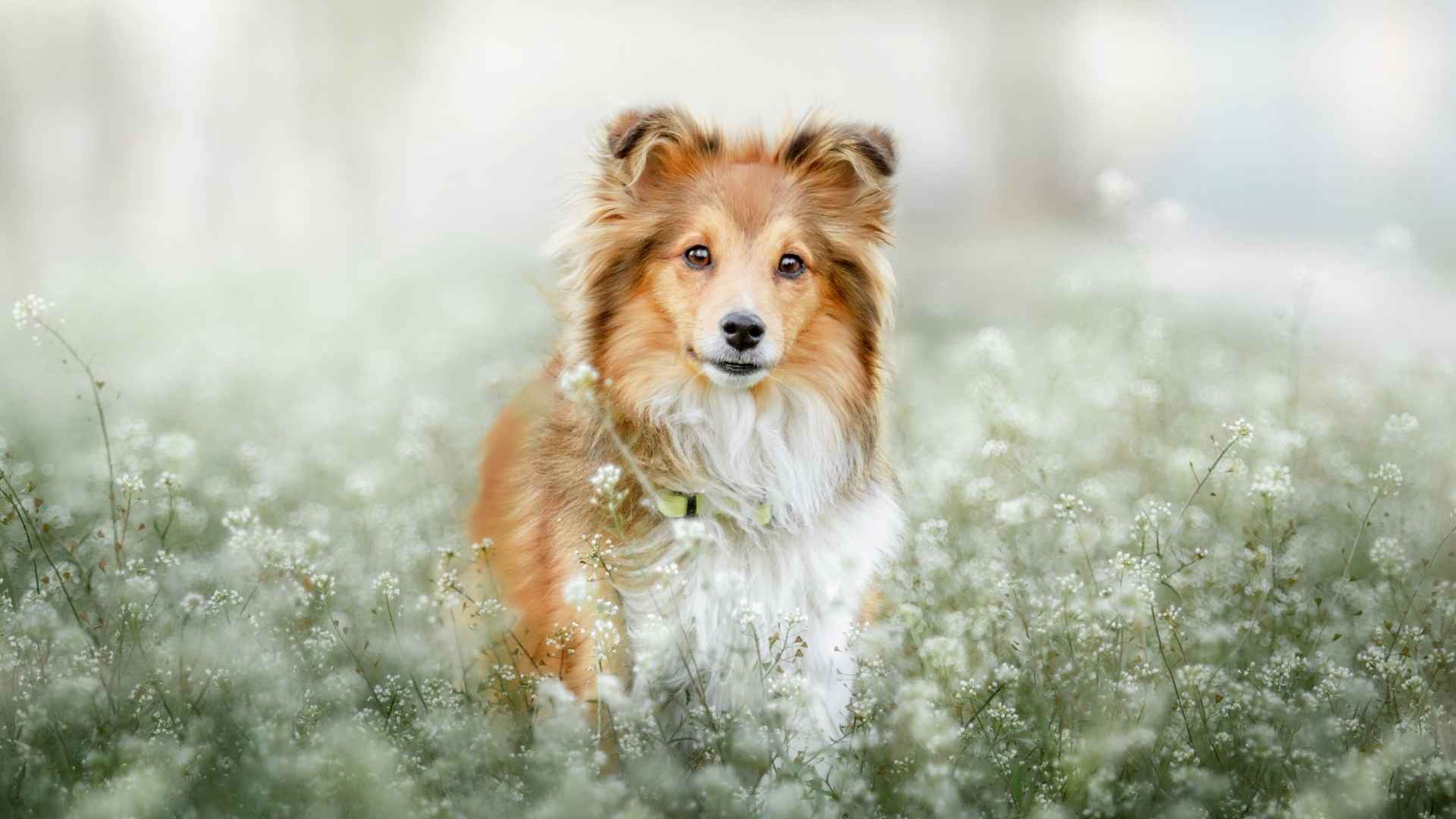Dog coat colors and patterns can be as distinctive as the personalities that come with them. Among the most captivating combinations is sable and white—a beautiful blend where rich, shaded tones (often tan, mahogany, or gray) overlay the body, typically paired with crisp white markings. This pattern isn’t just visually appealing; it often highlights the breed’s movement and structure, giving an elegant, flowing look.
While sable and white isn’t the most common coloration, several well-known breeds proudly showcase this coat. These dogs can vary greatly in size, temperament, and energy levels, but all share a unique aesthetic that sets them apart. From working dogs to companion breeds, sable and white appear in a range of temperaments and lifestyles.
In this article, we’ll explore seven sable and white dog breeds—each known for this stunning coloration and the remarkable qualities they bring to families and working environments alike.
Sable and White Dog Breeds
1. Shetland Sheepdog
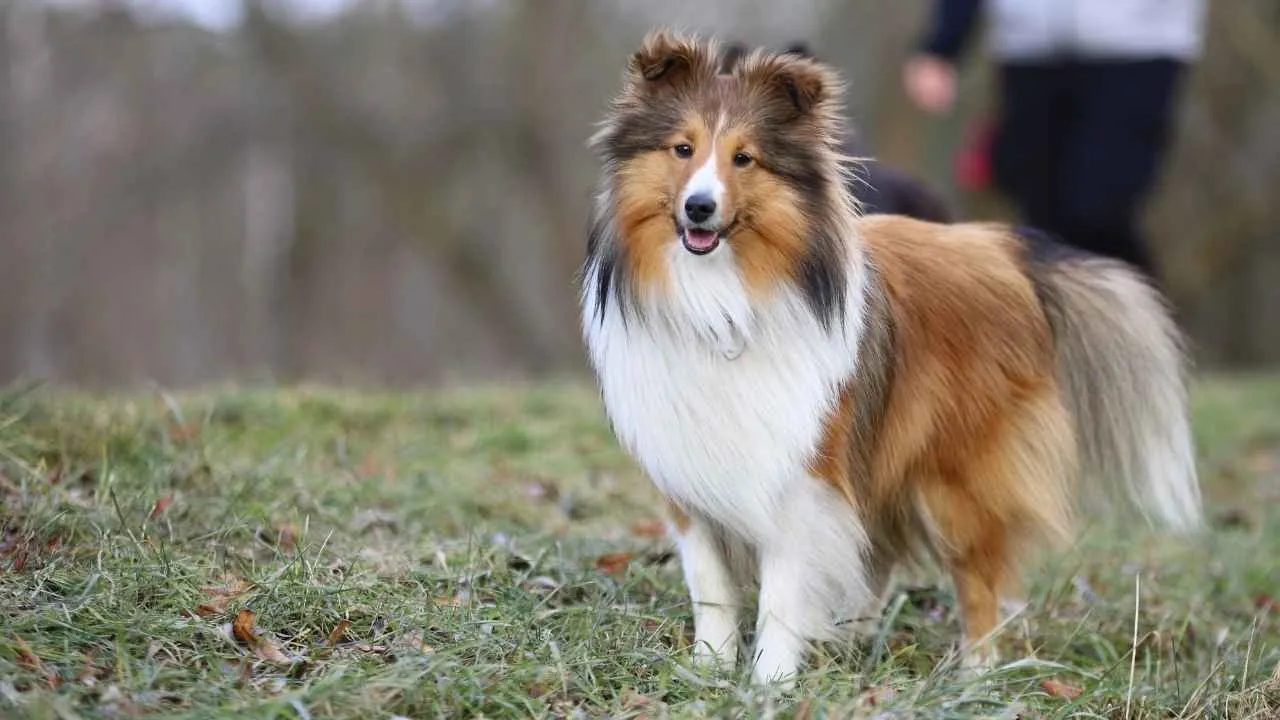
The Shetland Sheepdog is a small-to-medium herding breed with a stunning long coat that often features the classic sable and white color. The blend of deep mahogany tones with white markings on the chest, legs, and collar gives them an especially elegant look. Their thick ruff and feathered tail add to their show-stopping silhouette.
According to the AKC, highly intelligent and sensitive, Shelties are quick learners and rank among the top breeds for obedience. They respond best to gentle, consistent training and love having a job to do. Their sharp minds need regular mental stimulation to prevent boredom.

Shelties can be shy or reserved with strangers, but are deeply devoted to their family. They thrive on structure, predictability, and daily routines. Their strong herding instinct may surface in play but is easily redirected with training.
The long, double coat needs frequent brushing to stay free of mats, especially behind the ears and under the legs. Shedding is heaviest in spring and fall, but a consistent grooming routine keeps their coat manageable. They are relatively low-odor and clean.
Daily walks, agility games, and training exercises help keep them happy and balanced. While not hyperactive, they do need purposeful movement. They’re a good match for owners who enjoy engaging with their pets beyond basic care.
2. Siberian Husky
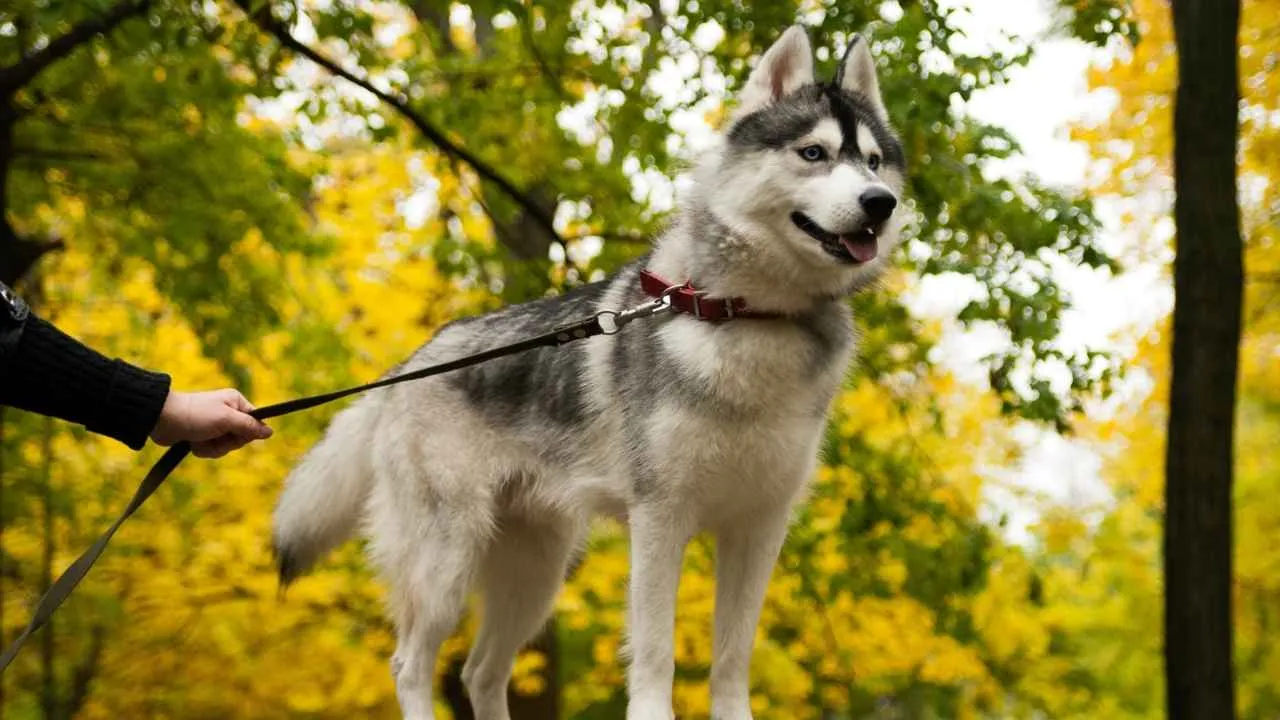
Siberian Huskies are known for their wolf-like appearance, and the sable and white coat variation adds an extra touch of wild beauty. Sable Huskies typically feature a reddish-brown or copper base with a black overlay, paired with white facial masks, legs, and undersides. Their almond-shaped eyes—sometimes blue or bi-colored—make them look even more striking.
Medium-sized and muscular, Huskies are bred for endurance rather than obedience. They’re intelligent but notoriously independent thinkers who don’t always aim to please. That said, they thrive with firm, fun, and consistent training methods.
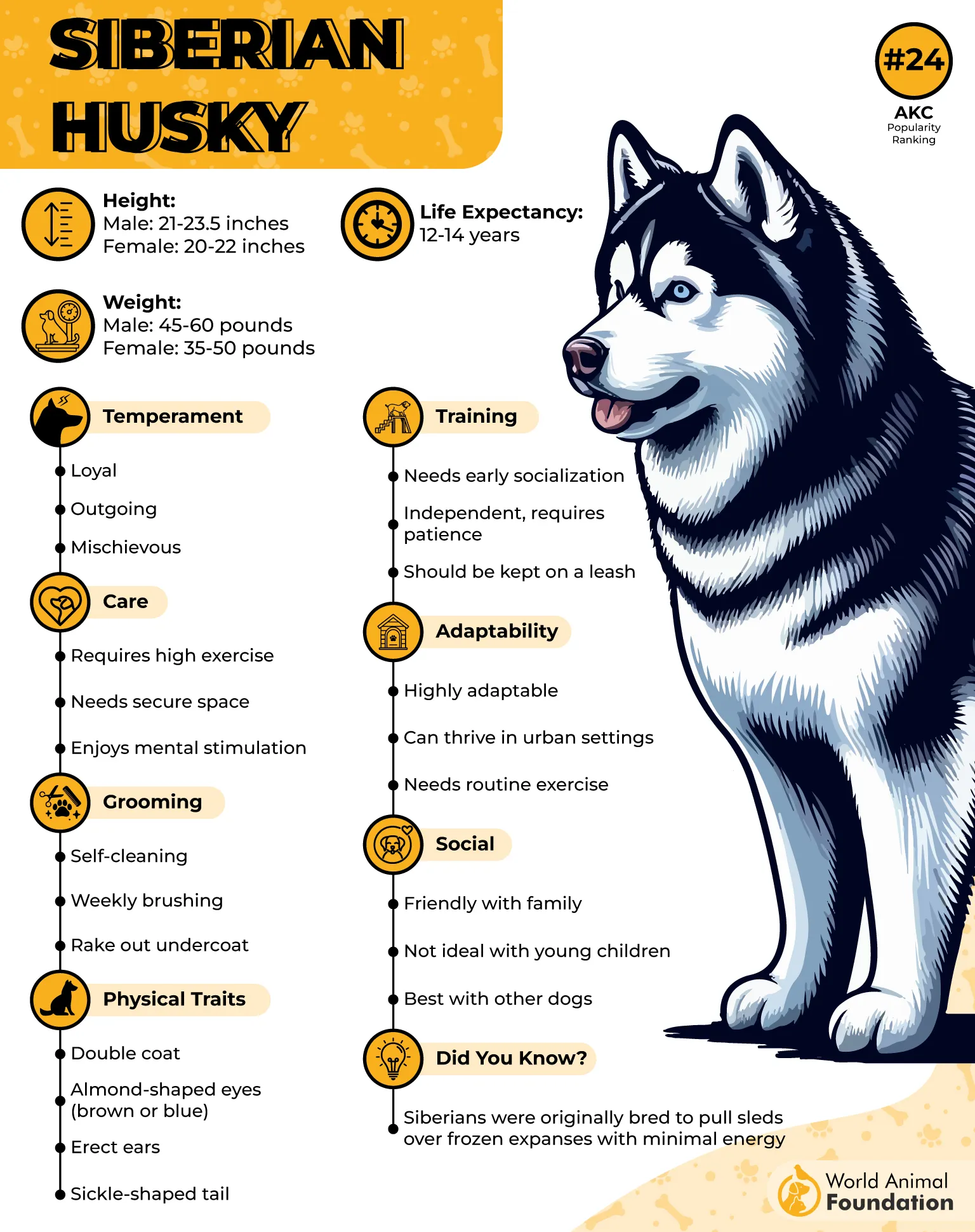
These dogs are pack-oriented and social, often doing well with other dogs when properly introduced. While affectionate, they’re not overly clingy and value their autonomy. Their vocal range includes howls, chirps, and “talking,” which can be amusing or noisy, depending on your tolerance.
Their thick double coat sheds heavily, especially during seasonal changes. Weekly brushing—and daily during shedding periods—is essential to control loose hair. Huskies are known for being clean and relatively odorless despite their dense fur.
Siberians need substantial exercise and space to roam. Long runs, sled-pulling, or hiking are ideal outlets for their energy. Without it, they can become escape artists or dig up your backyard.
Due to their prey drive and love of running, off-leash freedom must be limited to fenced areas. They’re best for experienced owners who understand their independent spirit and high activity needs.
3. Borzoi
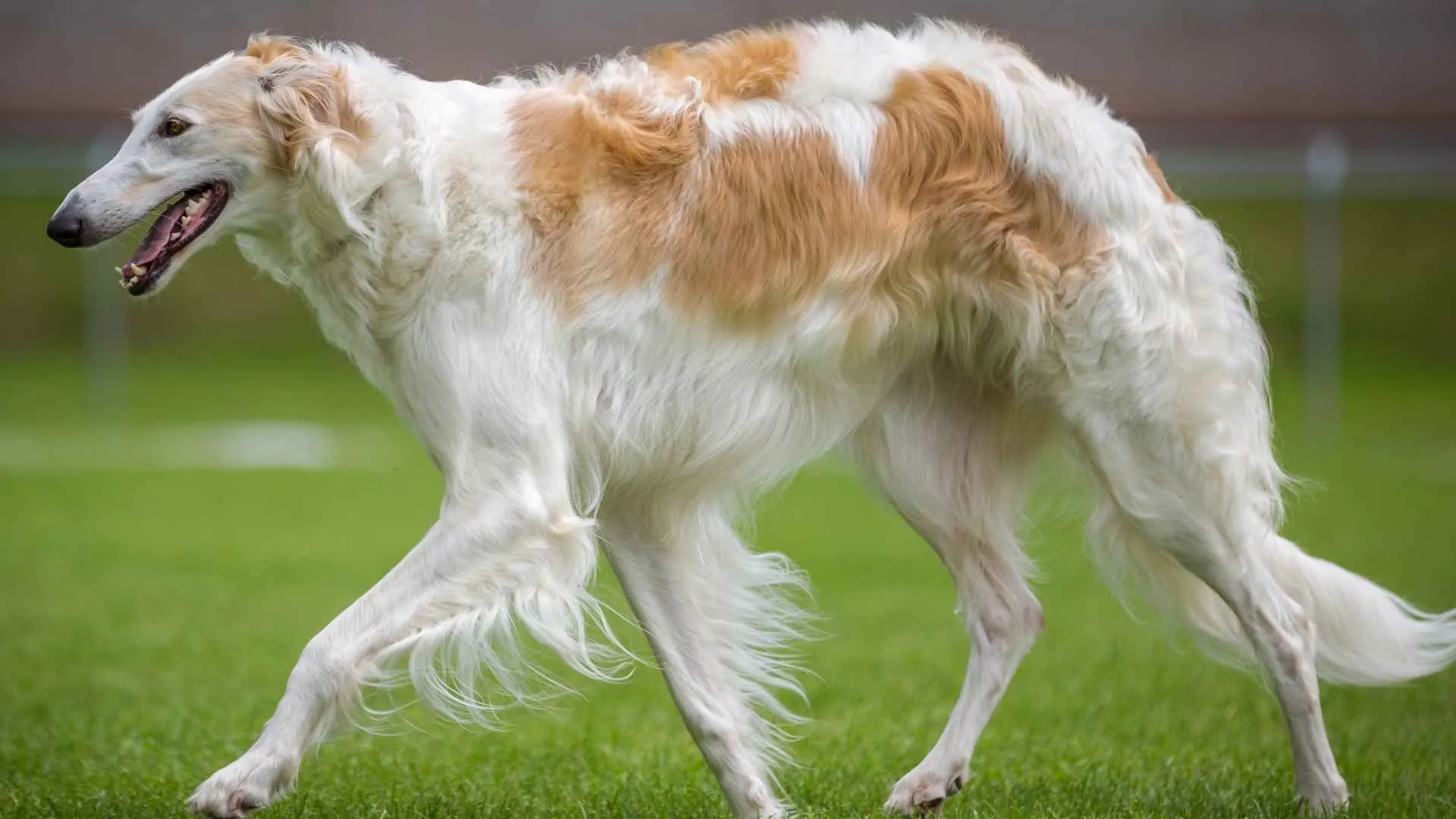
The Borzoi is a tall, slender sighthound that carries the sable and white coat with elegance and grace. This color pattern, though not as common, enhances their flowing silhouette and soft feathering. Their long, silky coat drapes over a frame built for speed and quiet power.
Originally developed to hunt wolves in Russia, Borzois are calm, sensitive, and dignified companions. Despite their hunting roots, they’re surprisingly low-key indoors. They prefer soft beds, calm voices, and a gentle hand in training.
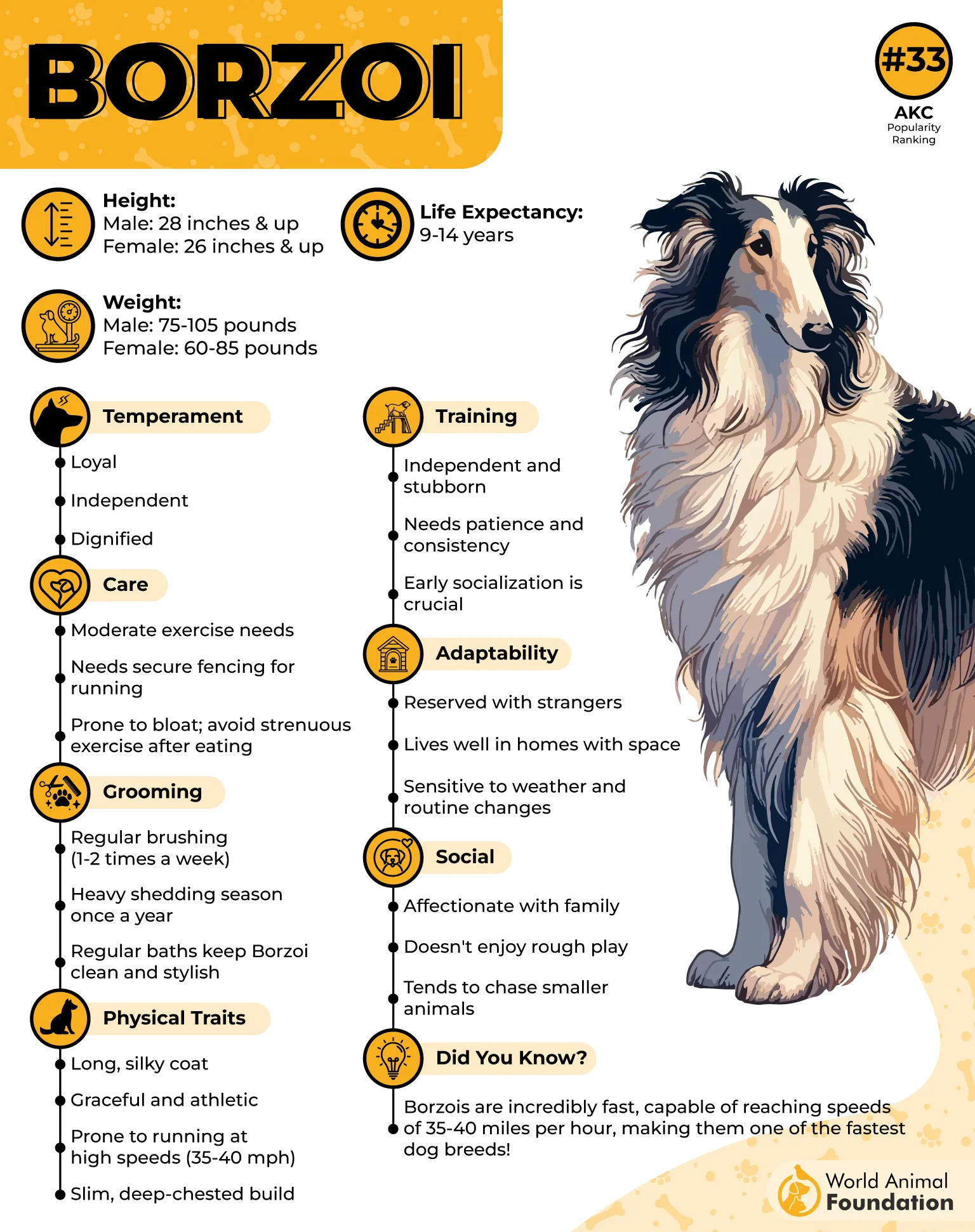
Training a Borzoi can be a delicate process due to their independent nature. Harsh corrections backfire, while positive reinforcement and patience bring out their intelligence. They enjoy learning but only when it feels collaborative.
They’re quiet dogs—rarely barking—and tend to observe before engaging. They bond deeply with their people and may be aloof with strangers. Their graceful demeanor makes them excellent fits for peaceful homes.
Weekly grooming helps keep their coat looking its best. Tangling can occur behind the ears and on the hind legs, so attention to detail matters. While they shed moderately, their fur has a fine, manageable texture.
Outdoors, Borzois need secure areas to run, as their chase instinct is strong. They benefit from occasional sprints but are otherwise content with daily walks and affection. Their blend of beauty and tranquility makes them unforgettable.
4. Border Collie
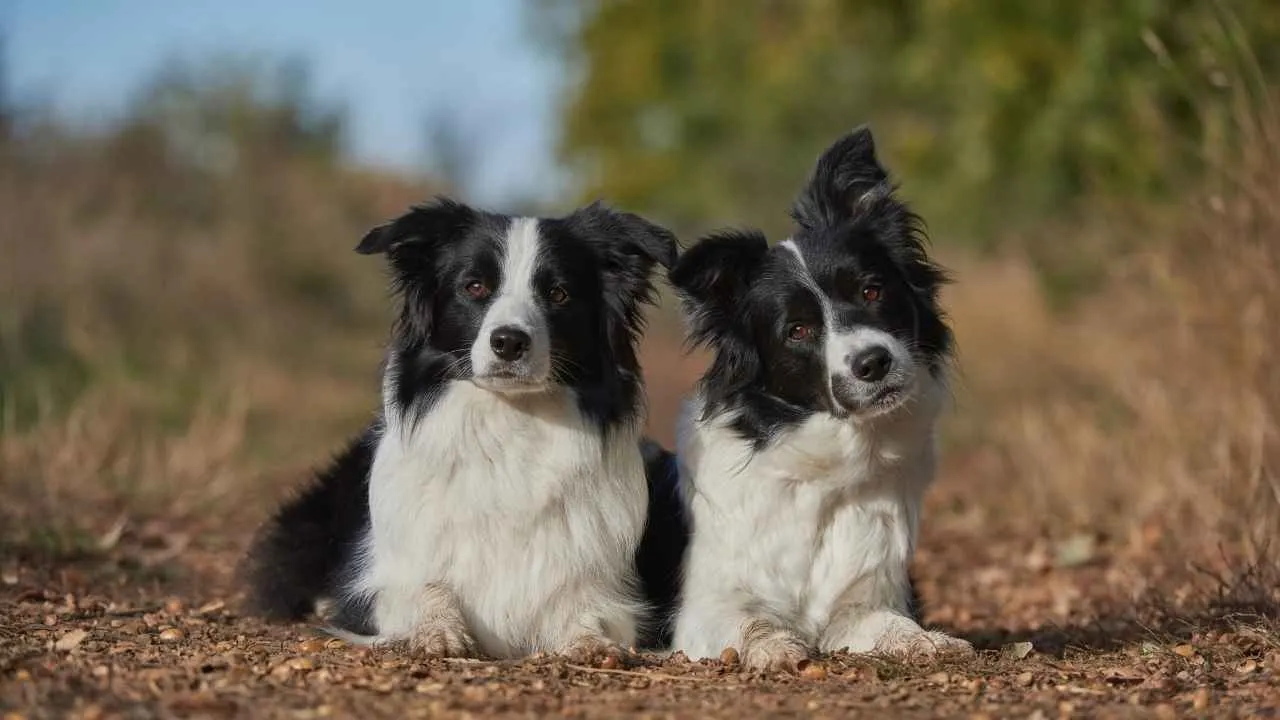
Border Collies in sable and white offer a rare, sun-kissed alternative to their more familiar black-and-white look. The sable coat gives a golden warmth that glows in motion, while the white markings highlight their sleek build. It’s a unique touch on a breed known for its boundless energy and intelligence.
Medium-sized and agile, Border Collies are widely regarded as the most intelligent dog breed, as per Britannica. They’re not just quick learners—they actively seek challenges and thrive when problem-solving. Training is easy in theory, but demands creativity and engagement.
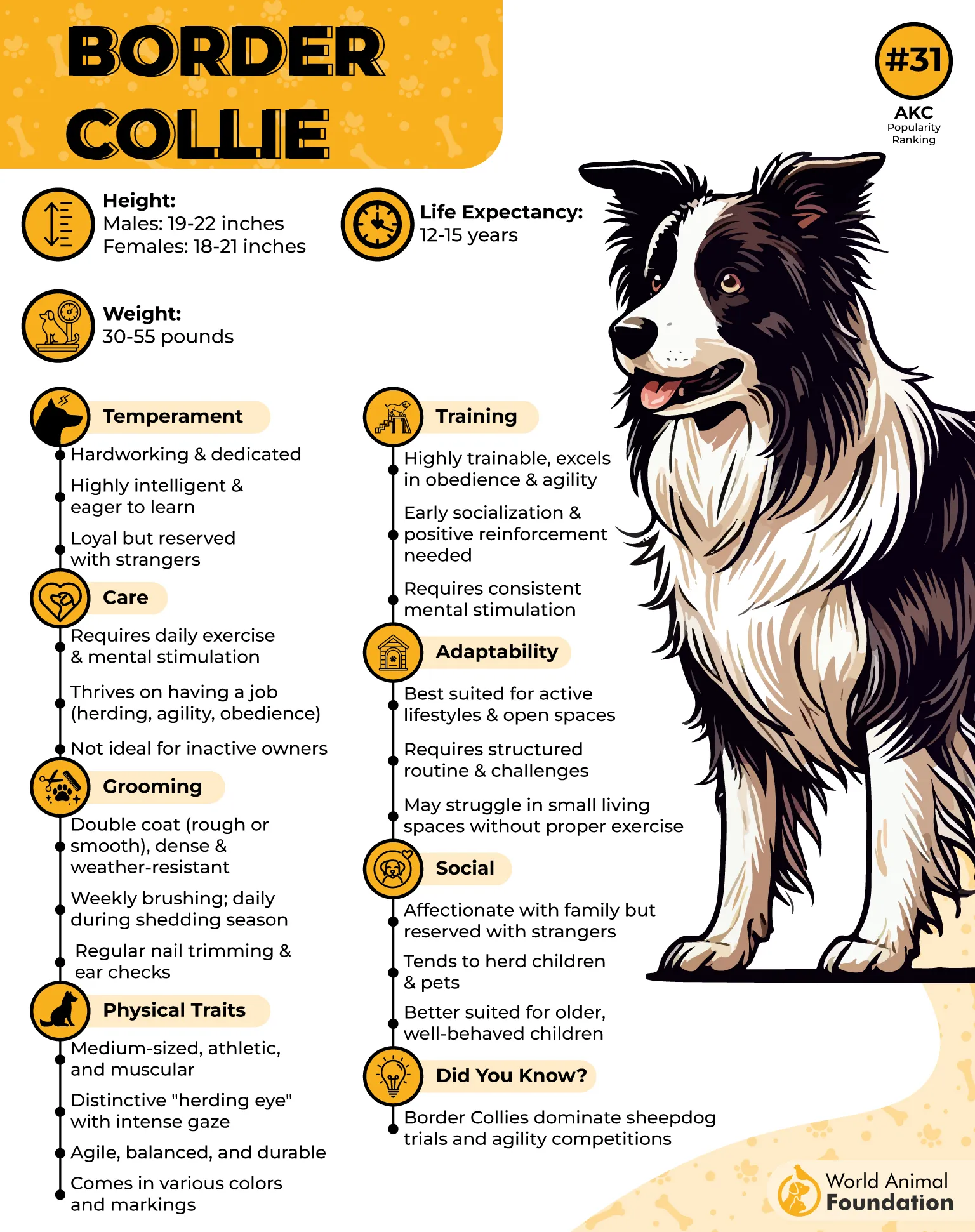
They excel in dog sports like agility, herding trials, and flyball. Without enough stimulation, they can become anxious or overly intense. These dogs are thinkers and doers, not couch potatoes.
Their coat ranges from smooth to rough and need regular brushing to remove debris and reduce shedding. They aren’t high-maintenance but do benefit from weekly grooming sessions. Their double coat offers good protection in outdoor settings.
Border Collies are affectionate and loyal but not clingy. They often form strong bonds with one person and become intensely attuned to their routines and emotions. Their emotional depth is one of their most underrated qualities.
These dogs need structure, challenge, and a purpose to be truly happy. A household that loves puzzles, games, and training is their ideal match. They’re not for everyone, but they’re unforgettable for those who understand them.
5. German Shepherd
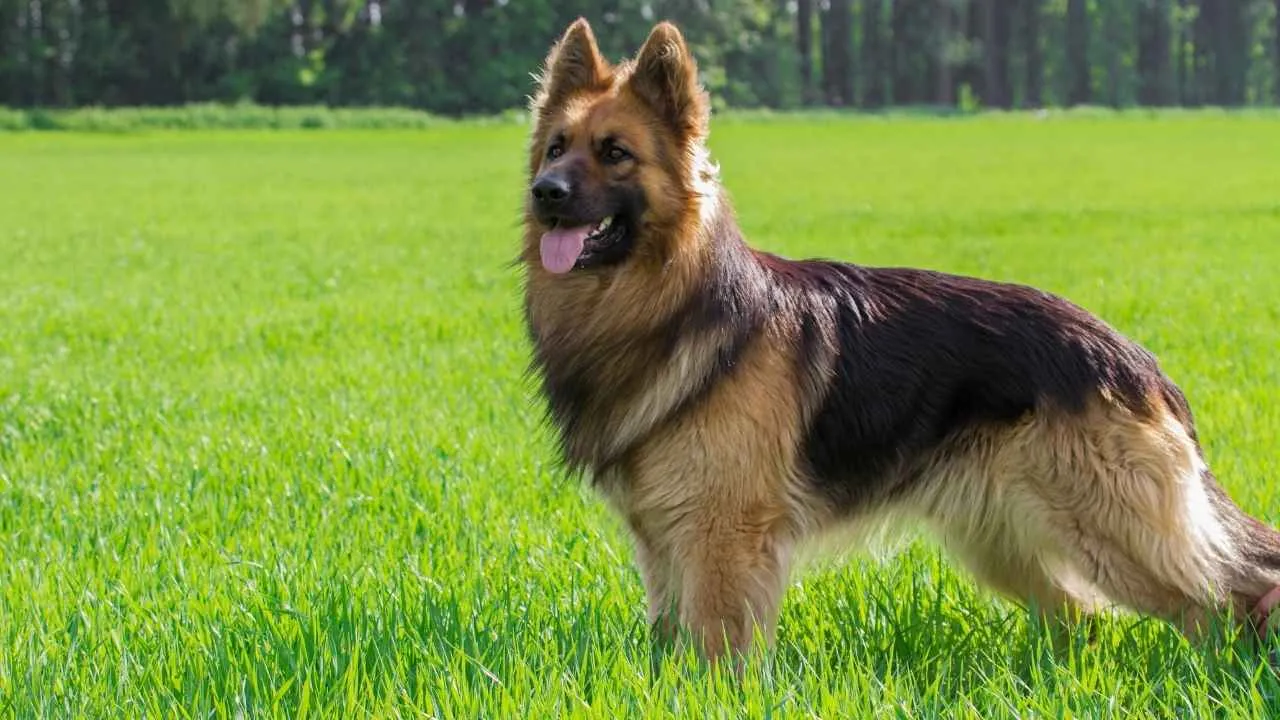
German Shepherds often carry a classic sable coat with white or light cream underlays, particularly on the chest and legs. The sable overlay brings out the breed’s rugged beauty, shifting in tone as they move. Their powerful frame and upright ears give them an alert, commanding presence.
Large and strong, these dogs are deeply loyal and thrive in roles that require purpose and structure. They’re naturally protective, making them excellent watchdogs when trained properly. Their working background contributes to their need for mental stimulation and physical engagement.
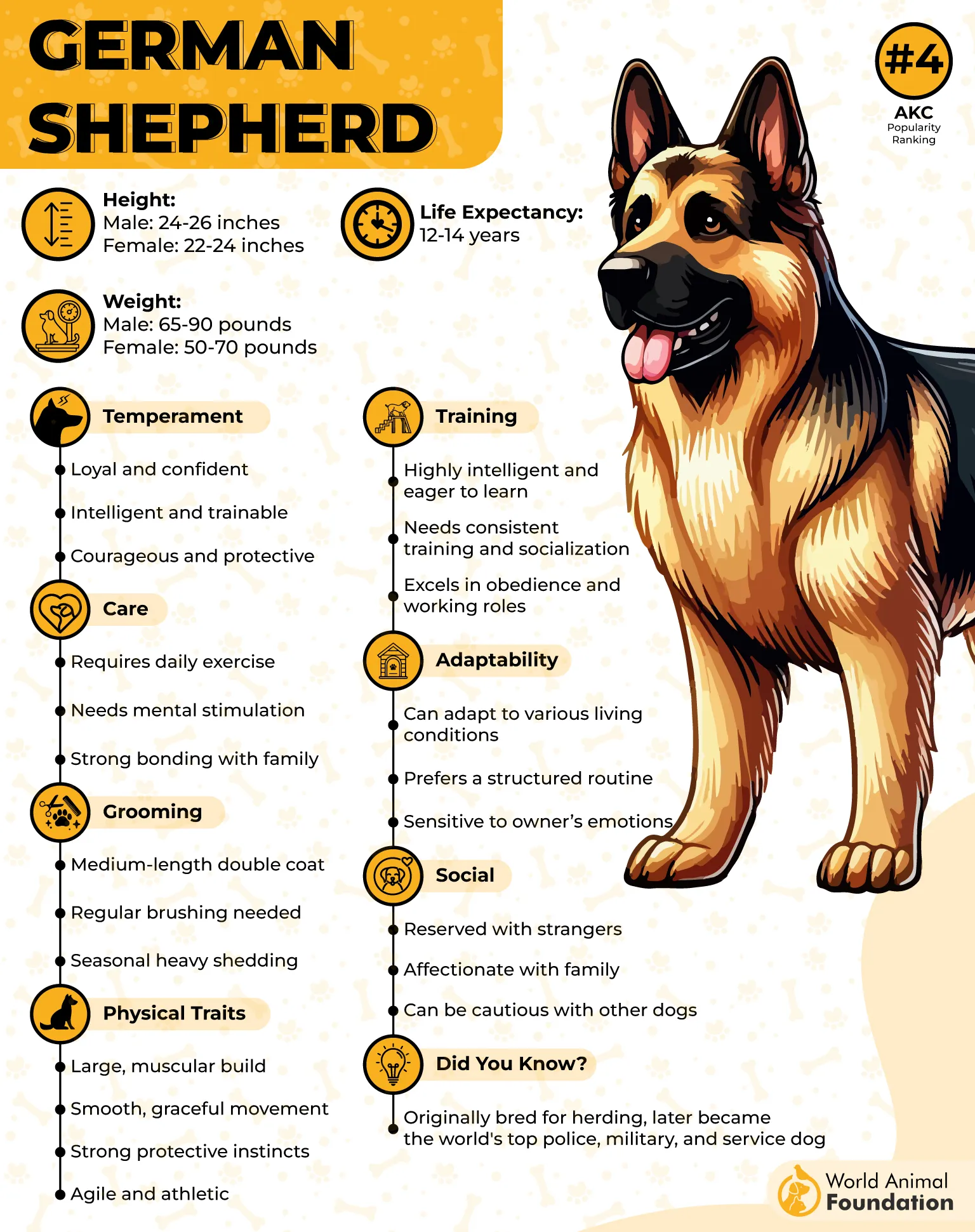
They are quick learners and respond exceptionally well to training, especially with experienced handlers. They excel in obedience, tracking, and protection work, but they’re also gentle with their families. Positive reinforcement and early socialization help balance their instincts.
This breed does best with active individuals or families who can provide structure and routine. They are highly bonded with their people and dislike being left alone for extended periods. Consistency is key to keeping their confidence and behavior balanced.
Their thick coat requires regular brushing to control shedding, particularly during spring and fall. A healthy diet, joint supplements, and low-impact exercise support their long-term health. Grooming also doubles as a bonding activity.
German Shepherds are happiest when they have a job—whether it’s guarding the home, running beside a bike, or learning advanced commands. They are adaptable but need leadership to thrive. In the right home, their intelligence and loyalty shine.
6. Cardigan Welsh Corgi
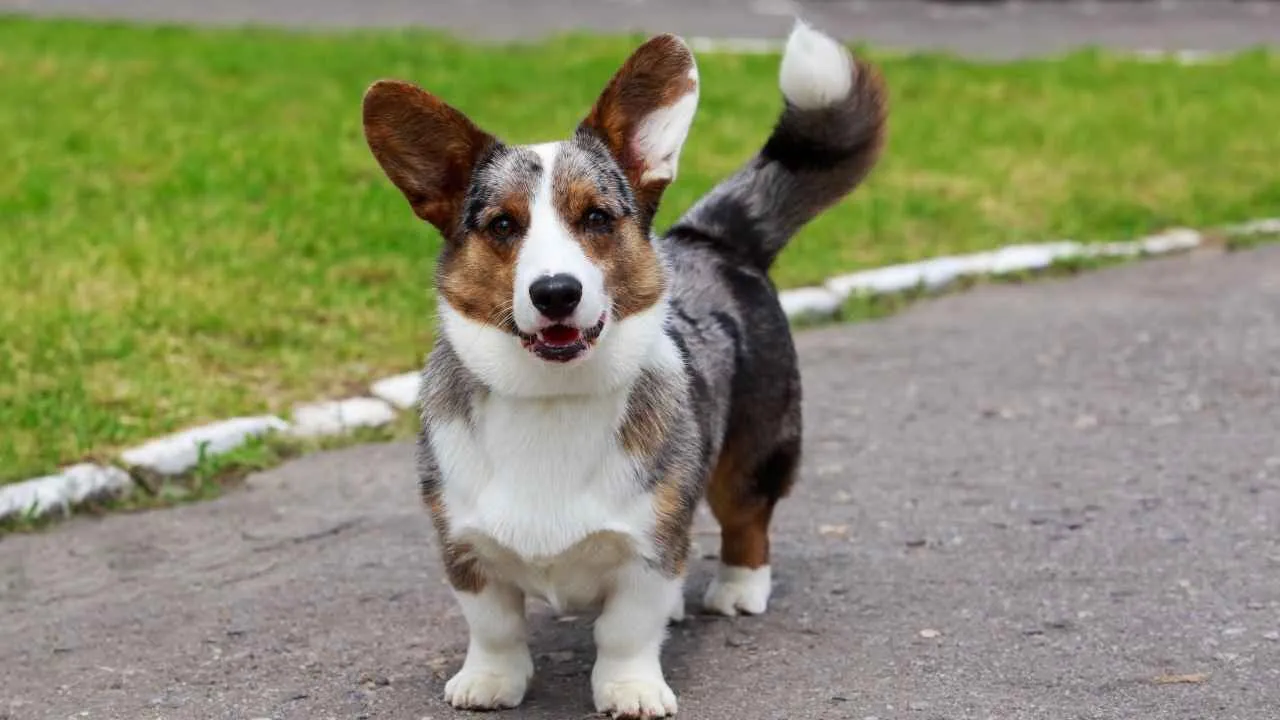
The Cardigan Welsh Corgi often appears in sable and white—a pattern that beautifully complements their low-slung build and fox-like features. Their sturdy frame, expressive eyes, and signature long tail give them a distinct look compared to the more popular Pembroke.
Compact and solid, Cardigans are extremely intelligent and carry a dry wit in their personality. They are not overly excitable but are highly aware of their surroundings and people. These dogs thrive with routine and do well in multi-pet households.
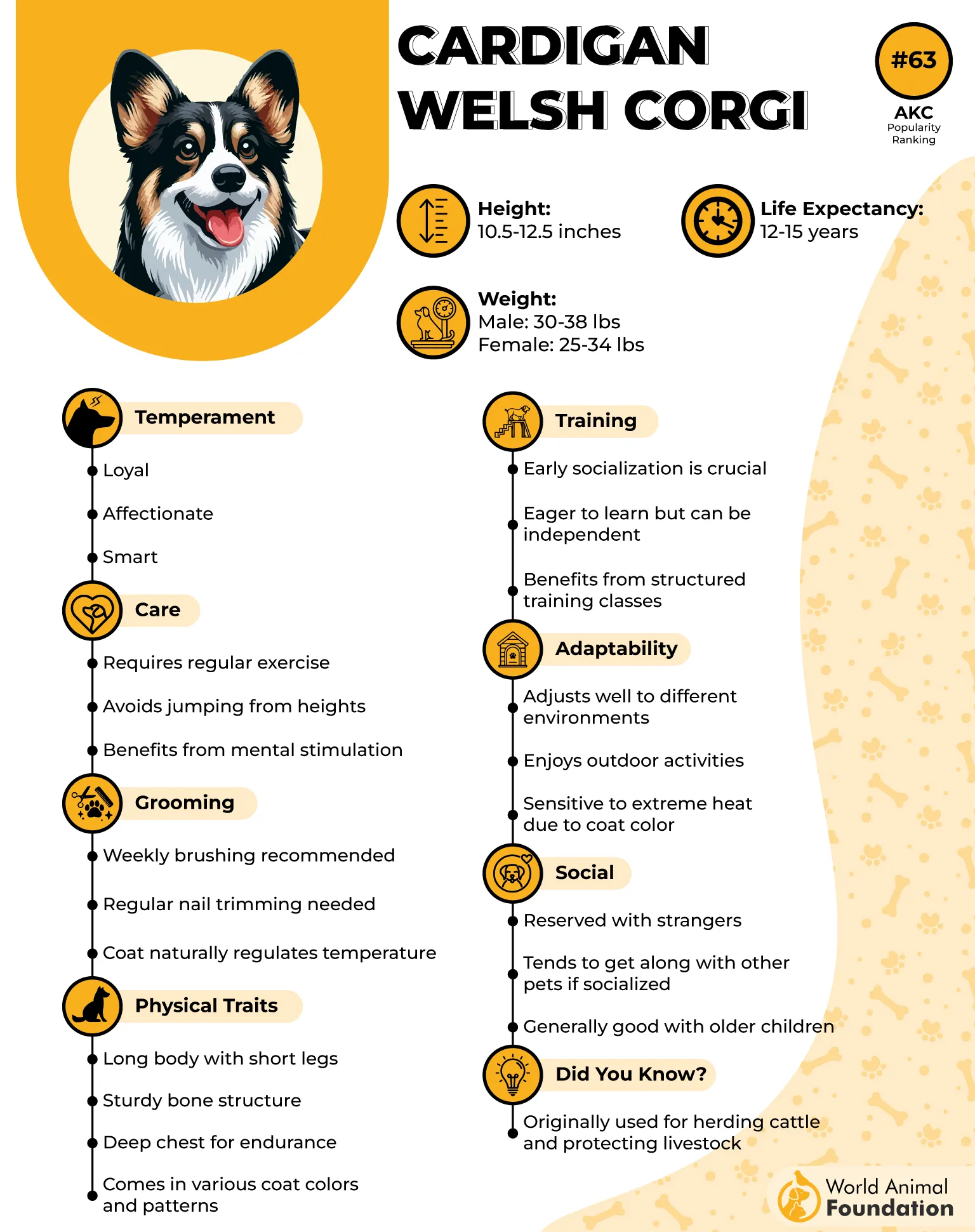
Training is typically smooth due to their eagerness to work and understand new commands. They’re excellent at obedience and enjoy problem-solving games. Despite their size, they often outsmart larger breeds in canine sports.
Daily exercise is necessary but manageable—a walk and a game of fetch will do the trick. They love sniffing and exploring, so mentally stimulating walks are ideal. Without stimulation, they can become bossy or vocal.
Their coat is double-layered and weather-resistant, shedding moderately year-round. Brushing twice a week helps keep their fur and undercoat in good shape. They’re generally clean dogs with minimal odor.
Cardigans form strong bonds with their families and are excellent with children. They’re alert without being aggressive and make dependable companions for both rural and urban homes. Their adaptable nature makes them a hidden gem among herding breeds.
7. Alaskan Malamute

As per PDSA, Alaskan Malamutes are large Arctic dogs known for their strength and endurance, and sable and white is one of the less common but breathtaking coat variations. The sable tones add richness to their thick fur, especially against the snowy white backdrop of their chest and legs. Their heavy plume tail and erect ears give them a regal, wolf-like look.
Originally bred to pull heavy sleds across frozen terrain, Malamutes are powerful, determined, and independent thinkers. They bond closely with their people but aren’t eager to please in the traditional obedience sense. Early training and socialization are crucial for managing behavior.

They are affectionate and playful with family, often enjoying rough-and-tumble games with children. However, they do best in homes where their energy can be channeled into outdoor activity. Their social nature makes them thrive in human company, not isolation.
Malamutes shed heavily and require consistent grooming, especially during seasonal coat changes. A deep brushing several times a week keeps their coat healthy and prevents matting. Their undercoat is thick and insulating, which means they’re best suited for colder climates.
These dogs are not ideal for small apartments or first-time dog owners. They need space, leadership, and plenty of structured outlets for their strength. Without proper care, their independence can turn into stubbornness or escape artistry.
Despite their intensity, Malamutes have a charming side and love to “talk” in vocal howls and warbles. They’re both majestic and mischievous, full of personality and presence. In the right home, they’re unforgettable companions.
Conclusion
Sable and white is more than just a pretty color combination—it’s a fascinating expression of canine genetics. A sable colored dog typically displays individual hairs with dark tips over a lighter base, creating one of the most visually dynamic sable patterns in the dog world. Unlike the brindle pattern, which appears as striping, sable gives a shaded, windswept effect that looks especially striking on athletic dogs and herding breeds with flowing coats.
These breeds often boast a double coat or thick coat, which enhances the drama of the sable coloring, especially in motion. You’ll see sable show up alongside features like white spotting, solid white blazes, or even dominant black markings in certain lines. Some dogs may carry traits like recessive black or recessive red, which influence how the sable shading appears or whether it shows at all. Genetically black dogs may express lighter overlays due to the complex interactions of black pigment and pattern modifiers.
From working dogs like the German Shepherd to potential sable-coated variants in breeds like the Australian Cattle Dog, the expression of sable is widespread and captivating across many breeds. Beyond their colors, these are smart dogs, affectionate dogs, and often powerful breeds with energy, loyalty, and presence. When matched with the right household, many of them become the best family dogs, offering beauty, brains, and heart in equal measure.


